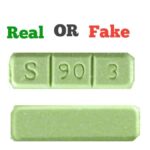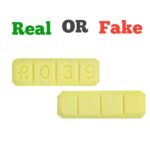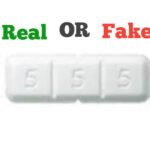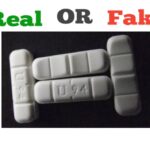How To Spot A Fake Xanax Pill
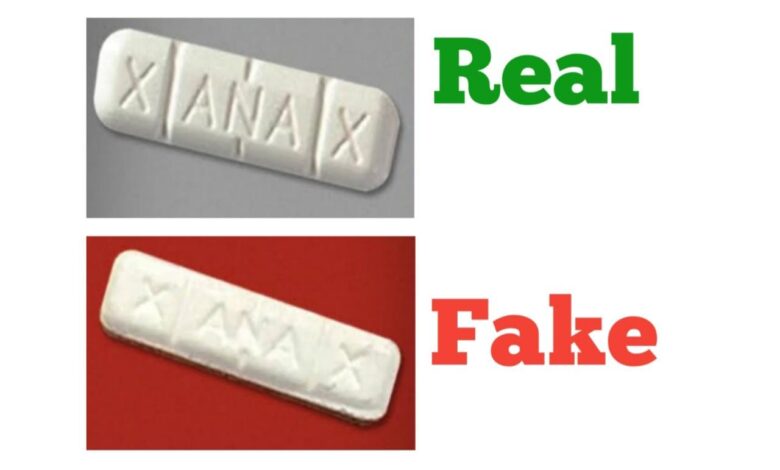
A counterfeit drug is a medication produced and sold with the intent to deceptively represent its origin, authenticity, or effectiveness. A counterfeit drug may contain inappropriate quantities of active ingredients or none, may be improperly processed within the body (e.g., absorption by the body), may contain ingredients that are not on the label (which may or may not be harmful), or may be supplied with inaccurate or fake packaging and labeling.
Counterfeit drugs are related to pharma fraud. Drug manufacturers and distributors are increasingly investing in countermeasures, such as traceability and authentication technologies, to try to minimize the impact of counterfeit drugs. The deadly consequences of using counterfeit medicine are well understood to be a challenge to the integrity of public health systems around the globe, and also a threat to our individual health and welfare. The issue of fake drugs has persisted despite all efforts by regulatory bodies toward compliance with standards.
What is Xanax?
Alprazolam, sold under the brand name Xanax, among others, is a short-acting benzodiazepine that is most commonly used in the short-term management of anxiety disorders, specifically panic disorder or generalized anxiety disorder.
However, some drug dealers are using fentanyl to produce fake Xanax. This is because it takes very little to produce a high with fentanyl, making it a cheaper option. This is especially risky when people taking drugs don’t realize they might contain fentanyl as a cheap but dangerous additive. They might be taking stronger opioids than their bodies are used to and can be more likely to overdose. Fentanyl is a powerful synthetic opioid that is similar to morphine but is 50 to 100 times more potent
Statistics show fentanyl is popping up in more substances and illicit drugs around the world. The Drug Enforcement Administration has reported a notable increase in seizures of methamphetamine and cocaine that contain fentanyl.
Federal officials believe that some of the mixing of substances at the drug trafficking level may be unintentional, especially when dealers are selling more than one drug. Synthetic opioids contributed to more than 36,000 overdose deaths nationwide in 2019, according to the National Center for Health Statistics. Deaths involving fentanyl made up more than half of the 2,320 drug-related deaths in 2019 in North Carolina.
How to Spot A Fake Xanax Pill
As a consumer, you may not have access to most of the test equipment used by regulatory bodies to verify the identity of a drug product. The following tips will serve as a guide to purchasing genuine Xanax bars and help you avoid fakes;
Visual inspection
Visual inspection as stated by the World Health Organization (WHO) (1999) still remains the first step in identifying potential fake drug irrespective of the analytical methods used. This is because such observation serves as a lead to identifying fake products even in the absence of the knowledge of the physical characteristics of a genuine drug product. You are expected to examine carefully both the package and its content before purchase or use.
Visual inspection of the Package
You should:
- Examine the package and check if it appears suspicious or different from what you previously know.
- Check if the security seal has been tampered with by looking for breaks or tears in the sealing tape and seals.
- Look for unusual fonts, font sizes, print colour, and spelling errors.
- Check the legibility of the information on both the primary and secondary packages.
- Check if the batch number, expiry date and manufacturer’s address on the secondary package are the same with that on the primary package.
- Check if the manufacturer’s address is traceable, that is if it contains the exact location of the company and not just the country address.
- Check if the registration number (FDA number as the case is for products marketed or sold in the United States) is properly printed or if it appears to be tampered with.
Visual inspection of the Dosage form
At this stage, you are meant to Check for differences in the physical appearance (color uniformity, size, shape, consistency etc.) of the drug. As stated by WHO, commonly encountered physical defects that should be looked out for in tablets include:
- Excessive powder and/or pieces of tablets at the bottom of the container (from abraded, crushed, or broken tablets);
- Cracks or chips in the tablets, swelling, mottling, discoloration, the fusion of tablets;
- The appearance of crystals on the walls of the container or on the tablet.
- Hardening or softening, cracking, swelling, mottling or discoloration of the pills should also be looked out for.
Source
The source of the drug also determines if you are buying fake Xanax bars or not. Buying Mexican Xanax exposes you to a lot of risks. Filling your prescription in a reputable pharmacy greatly reduces your chances of buying fake drugs while buying from illiterate and unqualified vendors who hawk drugs in buses, motor parks, and the streets increases your chances of buying fake drugs.
Price
This is another way of identifying Xanax. If the price is far cheaper than what is expected, then you have to think twice. However, this may not always be true, especially for some products (fake innovator/generic brands) which may be sold at the same price as the genuine ones.
Unexpected side effect
Counterfeit Xanax most of the time contains substances other than the appropriate Active Pharmaceutical Ingredient (API). They may contain incorrect substances, improper dosage, or hazardous substances like Fentanyl which produce unusual side effects, and worsening medical conditions after taking it. The medication should be stopped once any of the above is noticed.
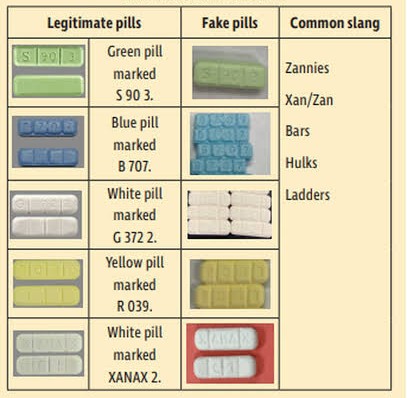
Fentanyl Test
Fentanyl testing is one of the most reliable ways of telling a fake from a real Xanax. A new University of Maryland study found fentanyl tops the list of drugs detected in overdose patients at two Baltimore hospital emergency departments. The finding suggests that hospitals and medical systems throughout the United States consider adding fentanyl, a potent synthetic opioid linked to most fatal overdoses in Maryland, to their routine drug testing panels. That is the conclusion of researchers at the University of Maryland School of Medicine (UMSOM) and the Center for Substance Abuse Research (CESAR) at the University of Maryland, College Park. Currently, fentanyl is not routinely included in these panels nationwide. The procedure described below can help law enforcement agents and public health officials to pick out fentanyl laced powders and pills .
Steps
- Crush pill or pour powder into a clean bowl or test tube
- Add ¼ inch of clean water to the powder in the tube or bowl and mix properly
- Dip the end of the test strip into the residue for 15 seconds, remove, and lay on a clean flat surface
- Check strip after 5 minutes, (manufacturer’s directions) results may be visible sooner: One line means fentanyl (positive) Two lines means no fentanyl (negative) * If the strip does not either have one or two lines, the test is invalid.
According to the Pharmaceutical Research and Manufacturers of America, consumers who purchase medications online should avoid the following: sites that are located outside of the U.S. that do not indicate any physical address; sites that do not have a license by the relevant State Boards of Pharmacy; sites without a licensed pharmacist to answer questions; and websites that do not require a prescription.
Consumers who wish to purchase drugs over the Internet should look for websites that have the Verified Internet Pharmacy Practice Sites seal. These sites, which are created by the National Association of Boards of Pharmacy, are licensed pharmacies selling FDA-approved medications to discourage the sale of counterfeit drugs from illegitimate online sources

